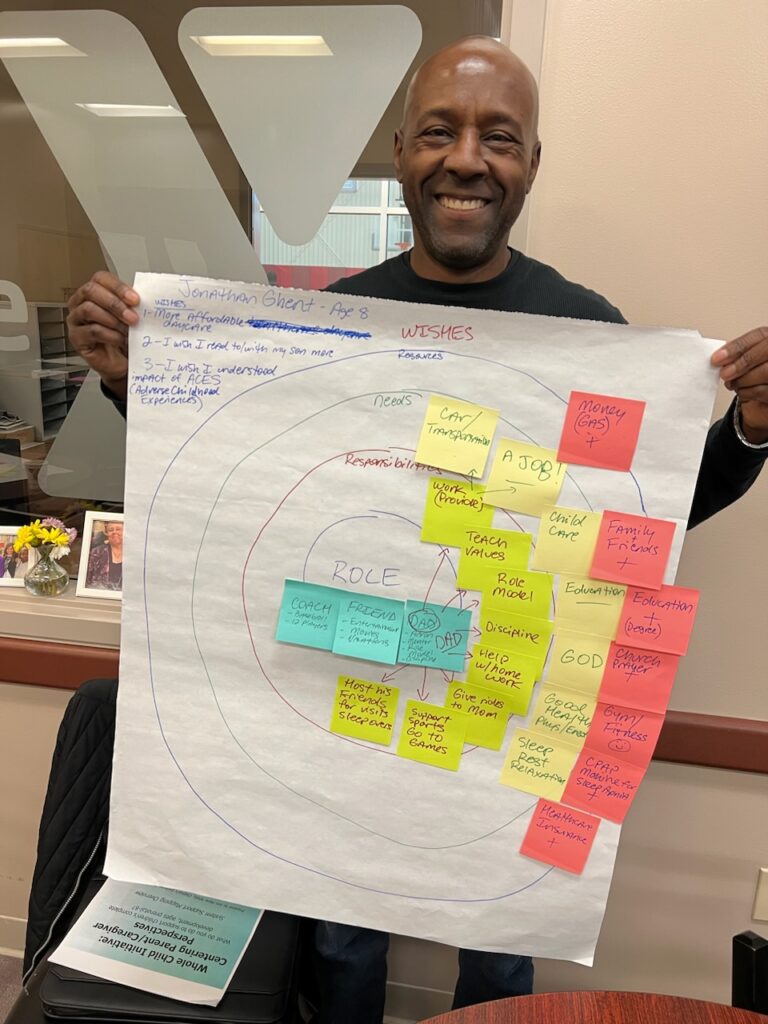
By: Jonathan Ghent
System support mapping is a guided approach to help community members think about and visualize the systems that support children and parents. It encourages participants to consider their own and others’ perspectives.
We use system maps to reach a better understanding of the complex systems people depend on, including healthcare, education, and human services. Creating system support maps is a great way to spark deeper conversations about which aspects of these systems are working and which are not. System mapping can also be used as a jumping off point to get system partners and members of the community on the same page so they can launch into collective action and bring about change.
As a consultant with the Whole Child Initiative team, I participated in a system mapping workshop at the Maplewood YMCA on March 11th. A group of parents and caregivers of children aged eight and younger were invited to answer a series of questions to identify how we support our children’s complete development. The goal was to get us thinking about what we’d like to change in support systems to make it easier for parents to provide the best possible outcomes for our children especially in terms of health, education, career, and other factors that impact quality of life.
Ten members of the community participated in the workshop. They came from a variety of local organizations including Fatherhood Connection and the YMCA of Greater Rochester.
I was excited to see so many Black and brown men in the room. For this type of work, it’s important to have men of color at the table because their voices need to be heard, and often they are not. It was amazing to look around the room and see so many faces that looked like mine.
There was one big difference, though. I was the only participant who didn’t have a child aged zero to eight, which meant I had to take a slightly different approach to creating my system map. So, I thought back to when my 22-year-old son was a child, and completed my map based on that time in our lives.
At first, I thought it would be difficult to “shoehorn” my situation into a format that was not the right fit for me at this time in my life. But as I sketched out my system map, I was amazed by how easily I could relate to every other parent in the room. In many ways, I was them.
As parents and caregivers, each of us mapped out:
- The role we play to support our children’s complete development.
- Our most important responsibilities as parents and caregivers.
- Our greatest needs to successfully carry out these responsibilities, including what’s most challenging.
- For each of these needs, we had to list the specific resources we’ve used to meet these needs.
- Then we made a list of the things we wished were different. How would we improve the resources available to us? What would we change to offset our unmet needs?
With our system maps in front of us, we talked about the actions that community members and organizations could take so children could fully experience whole child development. But our work did not end that day. We were asked to think and act on the following questions:
- What will we do differently right now?
- What will we take back to the organizations we work with?
- What do we want to follow up on with people in the room?
- What changes are so big and important, it will take all of us to get them done?
True to our Whole Child Initiative promise to be a parent-led program, the workshop was facilitated by Parent/Family Partners Toyin Anderson, Nahmese Bacot, Cherriese Bufis, Julio Cruz, and Jasmin Vega, alongside Executive Director of the Children’s Institute, Ann Marie White and Director of the Whole Child Initiative, Sara White-Smith.
The Whole Child Initiative’s system mapping workshop was an incredible experience. I encourage anyone interested in improving outcomes for children and youth to join us for the next one!
For more information, please contact swhitesmith@rocthefuture.org.
